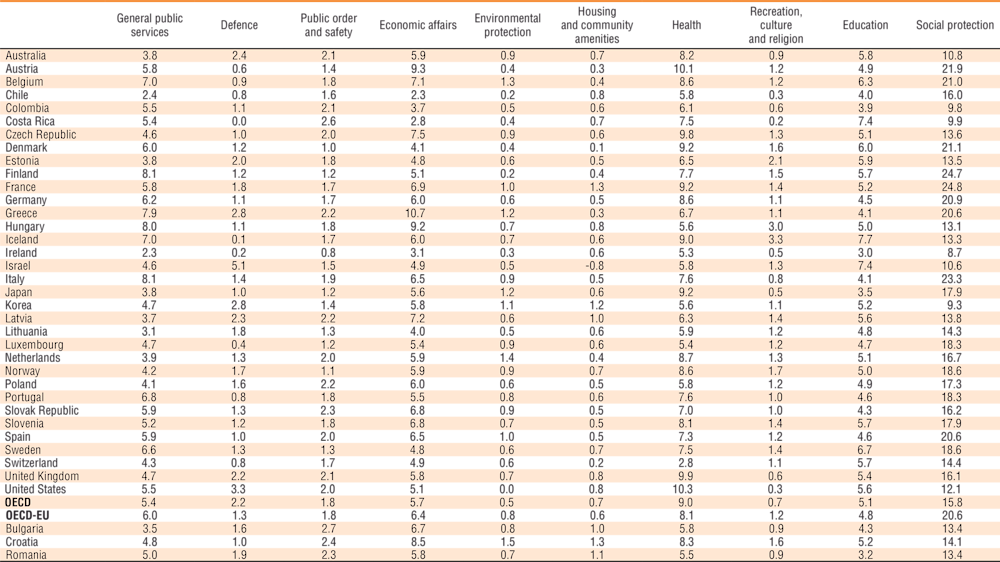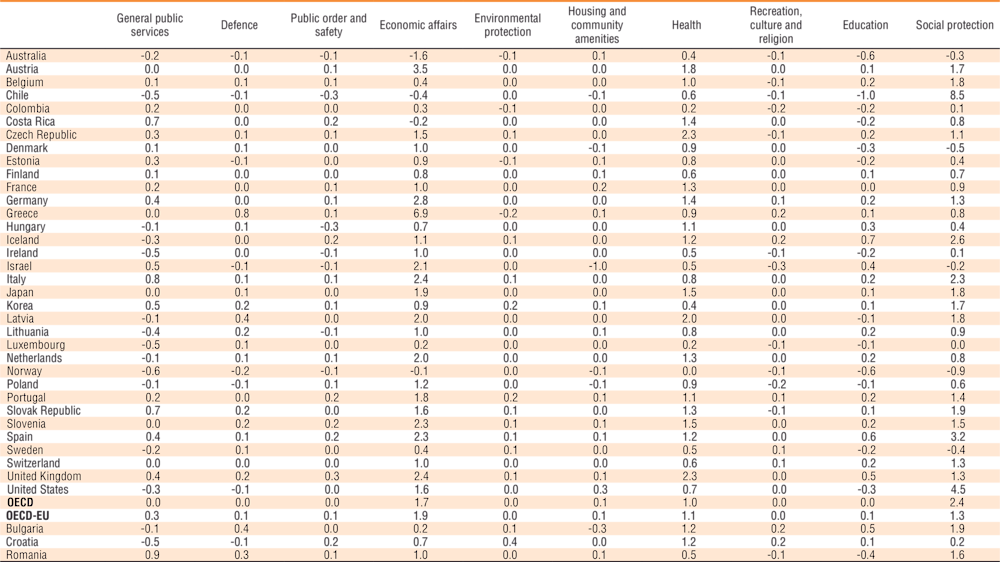Governments are responsible for the funding or direct provision of a wide array of services and activities, such as healthcare, education and justice; guaranteeing public order and the safety of civilians; and representing the country internationally. Governments’ expenditures by function provides an overview of the use of public resources in key areas and sheds light on government priorities and preferences for delivery modes (i.e. fully public or a combination of public and private). Changes in the structure of public spending can be driven by policy choices, as well as by socio-economic trends such as demographic changes, business cycles or shocks such as the COVID-19 pandemic.
On average in 2021, social protection accounted for the largest share of public spending (15.8% of GDP) in OECD countries (Table 11.4). It ranges from 8.7% of GDP in Ireland to 24.8% of GDP in France. Social protection includes pensions, and sickness, disability and unemployment benefits. OECD countries in the EU spend on average more on social protection (20.6% of GDP) than the OECD average.
Healthcare represents the second largest share of public expenditure. It generally comprises hospital and patient services, appliances, equipment, and medical products. From 2019 to 2021, average health expenditures increased from 8.0% to 9.0% of GDP in OECD countries, notably due to the COVID-19 pandemic. In 2021, the United States (10.3%) and Austria (10.1%) spent the most in this category among OECD countries; Switzerland (2.8%) and Luxembourg (5.4%) spent the least (Table 11.4). In Switzerland, this comparatively low share is due to the predominance of private health schemes.
Economic affairs formed the third largest spending category in the OECD in 2021. It includes commercial, agricultural, energy and transport expenditure made by public administrations to support productive activities. On average, OECD countries spend 5.7% of GDP on economic affairs, ranging from 10.7% of GDP in Greece to 2.3% in Chile. The fourth and fifth largest spending categories in 2021 were general public services and education. General public services (e.g. public debt transactions, the functioning of the central executive and legislative bodies, and transfers between levels of government) accounted for 5.4% of GDP, while education accounted for 5.1% (Table 11.4).
Between 2019 and 2021, public spending on social protection as a share of GDP increased by 2.4 percentage points on average across OECD countries. It increased the most in Chile (8.5 p.p.) and in the United States (4.5 p.p.). The largest decrease in social protection spending occurred in Norway (a fall of 0.9 p.p.). During the same period, the category with the second largest increase in public spending was economic affairs, which grew by 1.7 p.p. on average across OECD countries. The largest increase occurred in Greece (6.9 p.p.) (Table 11.5).


